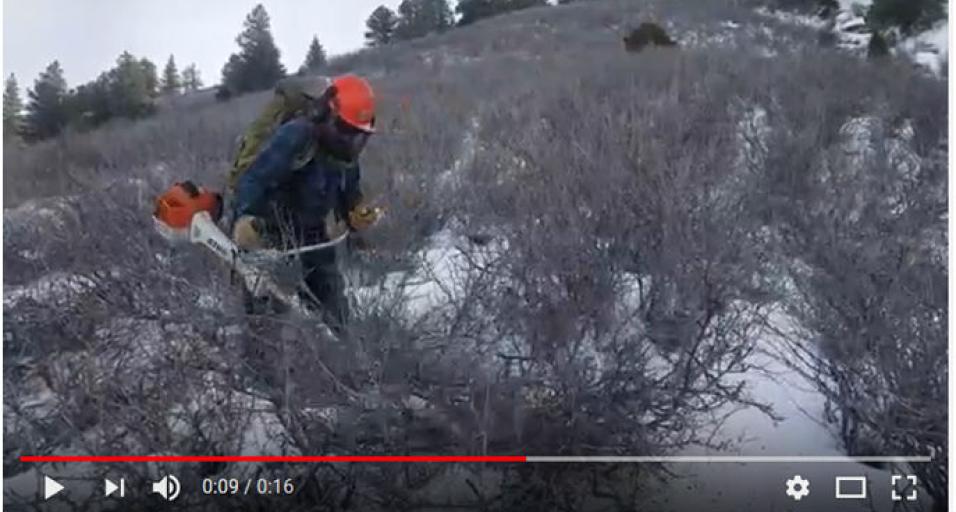Much of the true mountain mahogany habitat in the foothills of the northern Laramie Range in Converse County is classified as Mule Deer Crucial Winter-yearlong Range and is located in the Wyoming Game and Fish Department’s North Laramie Foothills Enhancement Area. These habitats are used extensively by mule deer in this area and comprise the most important winter range habitat type for the South Converse Mule Deer Herd. This herd has experienced a significant decline over the past 20 years and continues to have a high prevalence of chronic wasting disease. While the population has shown slight recovery in recent years, fawn recruitment has generally been inadequate to increase the population toward objective in this herd. Therefore, managers continue to conduct habitat improvement work to hopefully bolster the nutritional condition of does and enhance fawn production and recruitment to promote future herd growth.
True mountain mahogany readily re-sprouts from the root crown but requires a disturbance to activate this mechanism. Due to the loss of historic disturbance regimes, such as fire, many of these stands are very decadent. With the inherent costs, risks, and liabilities of conducting a prescribed burn, alternative treatment methodologies are warranted. The use of chemical treatment options, which are much less expensive, were trialed but did not meet the objectives of the project. Therefore, mechanical mowing will be used to rejuvenate mahogany stands by stimulating new, palatable and nutritious leader growth. Using mechanical methods creates a very predictable response and will allow for the objectives to be met. Given that topography and terrain limits the use of mechanized equipment, we will use hand crews with brush cutters/weed eaters with saw blades to conduct the mowing. This proposal covers 956 acres of treatment, which is only a portion of the area which we would eventually like to cover. Over 2,000 acres of either public land or willing private landowners have been identified for treatment.
The goal of this project is to improve the nutritional quality of forage for mule deer in the northern Laramie Range. The objective of this project is to mechanically treat between 50% and 90% of true mountain mahogany stands in a mosaic fashion within a defined area, with 956 acres of treatment being prescribed for this initial phase. A hand crew will cut plants to about 12 inches above ground, with some of the remaining plant skeleton being left to help trap snow to enhance soil moisture while also protecting new regrowth for the first year or two. The litter material will be left as is on the ground to allow for additional moisture retention and nutrient recycling. The treatment timeframe will be from November through March, pending weather and access. Winter and early spring are the best times to conduct this work since the plants are dormant. When they become active later in the spring, they will be able to allocate their resources to the remaining branches for new growth. Given that treatment areas are in mule deer winter range, work will not be conducted when temperatures are below 10 degrees Fahrenheit or snow depths are greater than six inches. This work is proposed to occur through the spring of 2019 and may continue through winter/spring of 2019/2020.
True mountain mahogany habitat treatment

